Vestax PMC-05 Pro Price at launch: $1099 /€829 /£665
Table of Contents
Preface from The Editor
The impact of Vestax in the DJ world is immense. But it’s not just while they were alive and kicking, but their influence is clear in every controller and mixer out there. And today’s #djgearfromyesteryear is the PMC-05Pro IV, which for me is the blueprint for every battle mixer since it was released.
The original Vestax PMC-05 Pro was incredibly basic — like 2 band EQ and no XLRs basic. And this continued through different iterations up until this beauty hit the scene. The PMC-05Pro IV had everything thrown at it including 3 band EQ, XLR outs, USB, and all the fader controls you could ever need, not to mention a killer crossfader as standard. Finally, the 05 deserved the Pro moniker. You can still buy parts for Vestax.

















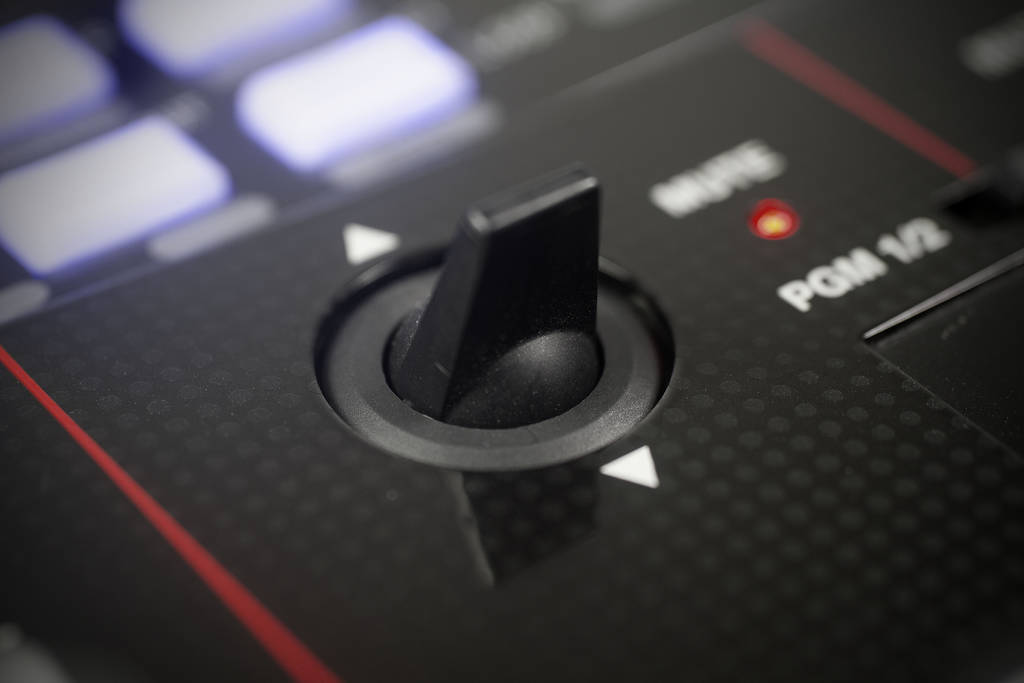









But it’s the MIDI buttons that mark this out as a serious influencer on the scratch mixer market that we know today. And I’d also argue that while the fat toggles seen here aren’t for effects, but also made it through to the Pioneer S9 and Rane Seventy-Two/Seventy mixers too. I wrote a whole piece about this very subject a while ago.
When I do pieces like this, my mind goes down the rabbit hole and wonders what a Vestax/Serato mixer might have looked like. It’s strange to think that while there were all manner of controllers that they made together, there was never a Serato
Vestax PMC-05 Introduction

First released in 1997, the original PMC-05 Pro put Vestax firmly on the turntablist map with its combination of great design and smooth VCA faders. With the launch of Vestax PMC-07 and PMC-08, the 05 was relegated to the lower end of the range, receiving regular tweaks in the face of changing DJ requirements and stiffer competition. Now, the PMC-05 Pro is back as Vestax new flagship two channel scratch mixer, reinvented for the DVS DJ.
First Impressions

Functionally and aesthetically the Mk IV owes more to the PMC-08 than any of its brushed metal predecessors. The piano black model reviewed looks very much a flagship product in both size and finish compared with earlier models. Build quality is good, with metal construction throughout and a solid, albeit slightly lightweight for its size chassis. The smooth metal face plate feels similar to the PMC-08, split around two thirds up for easy access to the faders via four flush mounted screws.

There’s a lot going on feature wise, but the fader area remains remarkably clean, with headphone volume fader, cueing and effects send/return controls placed conveniently to the near left and right. Cueing between channel one and two is via a dedicated fader, with an additional switchable pot to allow selection between this, master output, SUB and effects inputs. Sitting between the line faders are the familiar two LED strips for level metering, switchable between stereo master out and individual channel level monitoring. Each channel is also equipped with a new ‘chunky style’ dedicated channel mute/’transformer’ switch.

Dominating the middle of the mixer are the assignable MIDI controls for DVS control, above which sits the three band EQ, gain and line input selection controls for each channel, but no balance/pan controls. All knobs are the now standard Vestax rubberised type, sitting on metal stemmed pots. Fader curve, lag and reverse controls sit on the front of the mixer, flanked either side by polished protective bars and to the right, the two headphone output jacks (standard ¼ inch and mini jack).

Round the back you’ll find XLR master outputs, ¼ inch jacks for booth output and stereo phono AUX outputs – all controllable via pots on the top right of the mixer. The Pro IV has gained a switchable mic/line session input named SUB, with its own dedicated three band EQ, Mute button and a very useful 3 bar LED meter for monitoring levels. These controls are shared between a Line 7 stereo phono input and XLR combo MIC input round the back. The SUB input can’t be assigned to the crossfader, but being cue-able means you effectively have three useable channels to play with.
Finally, power is supplied by the same external power brick as the last of the Vestax PMC-05 series, which although not as desirable as an internal supply, is still preferable to the model Vestax shipped with the PMC-08.
Faders

The VCA faders of the PMC series have changed little over the years, albeit for some additional lag adjust circuitry introduced in the PMC-08 and its CF-CC fader. Both line faders on the Pro IV are slightly improved VCA models, labelled SF3-0VN – smooth and light but with enough resistance to hold when required. The individual curve adjustment ranges from a very gradual, almost rotary resolution fade through to a super sharp cut in. The fader lag on each channel is approximately 2mm, which combined with the generous curve and hamster controls, makes them equally suitable for smooth fades or ultra tight scratch techniques.

It’s the crossfader where things have really changed with the inclusion of Vestax brand new CF-X2 digital fader. It’s a shorter bodied fader than its predecessors, with the familiar built-in metal dust guard over the fader slot and a standard 4mm stem. This is a fully magnetic device, boasting three high precision sensors on each side of the fader shafts for accurate detection of position and movement. In use this equates to a smooth, responsive and ultra sharp fader that is more than capable of handling any scratch technique you can throw at it.

Compared to its predecessors, the CX-F2 feels very light with almost no resistance. Leaning the mixer housing from left to right is enough to move the fader fully from one side to another. This can be challenging when juggling, although matters are improved by the included ‘anti-bounce plate’ which absorbs the force of the fader when it hits the end of the shaft, rather than bouncing back as it does by default.
Lag is independently adjustable on both sides via the front mounted adjustment pots down to around 1mm. There’s a fine line between sharps cuts and full bleed, but combined with the same generous range of curve as the line faders, you can configure it almost exactly to your preference.
If you like a super light crossfader, you’ll love the CX-F2! If you’re more accustomed to Alphas, Penny & Giles, Pro-X faders and their kind, it does take some getting used to. The lag and curve adjustments go some way to improving things, but there is no tension adjust control to firm things up a little. Furthermore, as the new fader sports a proprietary connector, you can’t just drop in a 3rd party replacement should you not like it.

Regarding the new channel mute switches, the feel is reminiscent of the switches in the PMC-05 Mk III and PMC-08. The large new plastic toggles make the switches easier to grip, but with more travel, fast transformer techniques feel a little clumsy. As a method of quickly muting a channel with visual feedback courtesy of the LED’s, they serve their purpose, but with line faders as good as these, they’ll get little other use.
Sound Quality

The Vestax reputation in the scratch market has always focused around faders, usability and features rather than sound quality per se. The Pro IV features Vestax trademarked infinite-cut 3 band isolators, which provide a good range of EQ to carve the sound to your preference, from silence through to a +10db boost over low, middle and high frequencies for each channel (including SUB/MIC).
Send a decent signal to the mixer and it sounds punchy and clear, if lacking a little warmth. However there is a detectable ‘hiss’ when the mixer is silent at high volumes. Overall sound quality is certainly better than the old 05 and 07 series, but just not as nice on the ears as competitive mixers in the price range.
DVS Features

Rather than integrate audio hardware into this mixer, Vestax have taken a more open approach to DVS integration. Although this means you’ll still need your DVS box and cables, the Vestax PMC-05 will play happily with pretty much any software and hardware combination by incorporating standard MIDI controls and versatile connectivity options.

Firstly, the mixer supports the simultaneous connection of 2 DVS boxes – the first via the usual stereo phono and line input, the second via a switchable line/phono level output and second line input, as first seen on the earlier Vestax PMC-05Mk III DX (see Johnny 1 Move’s review elsewhere in the skratchworx archive for a detailed video demonstration).
Each channel has a 3 position selector on the top of the mixer, which allows you to select which input gets fed to the line faders. In a dark club or small booth DVS changeovers are always a challenge, but this goes a long way to smoothing the process, whilst allowing DJ’s to use different systems, alongside standard vinyl and CDJ’s simultaneously from the same compact mixer.
It’s the built in MIDI controls though that lift the Pro IV above your average scratch mixer, allowing you to command and navigate your DVS software without touching your laptop. Connection between mixer and machine is via a standard USB port at the rear and the included USB cable. MIDI drivers are automatically installed on connection to your machine, although Vestax do also provide a CD containing installation software should you need it.

There are 12 backlit buttons in the centre of the mixer, switchable between two banks via a central ‘shift’ button, giving you a total of 24 assignable buttons. Switching banks turns the LED’s from blue to red and vice verca so you can easily determine which bank is live. Commands are printed above & below each button that correspond to the preset mappings Vestax supply for import into Serato Scratch Live and NI Traktor Scratch e.g. Loop in, Cue 1, Sampler 2 etc.
The controls appear listed under a MIDI device named ‘PMC-05 Pro’ on your computer and can be freely mapped as you see fit in your chosen software. Vestax thoughtfully include a cardboard template to write your own custom mappings onto, but as the transparent plastic above the buttons cannot be removed, it rests clumsily on top.

Either side of the buttons are two rotary encoders marked ‘Scroll Crates’ to browse up and down track lists in your software. Each encoder doubles as a button that is individually assignable for loading music into a deck. The encoders themselves rotate with a satisfying tactile click, so it’s possible to ‘feel’ how many entries down your playlist you are without actually looking at the screen. The line faders and crossfader also send MIDI data, which allows other control options such as running your DJ software in internal mode, or using the mixer as a controller with software like Ableton etc.
In use, the MIDI controls feel good under the finger and work really well in both day to day and extreme performance use. With the market awash with external DJ controllers, there is still a lot to be said for having them built into the mixer itself. Controlling software from the mixer quickly becomes second nature, and opens up a wealth of creative options that just aren’t feasible via direct laptop control. I only wish Vestax could have included a couple of extra dedicated MIDI pots to perform smooth filter sweeps etc. but there’s nothing to stop you mapping these to the faders or buttons.
Effects Routing

Effects send and return on the Pro IV pretty much does what it says on the tin. Unlike the dual channel implementation of the PMC-08, the Pro IV reverts to a single stereo bus, which applies all external effects to the signal post fader. You can send PGM1, PGM2 and even the SUB/MIC inputs over the effect bus, individually or together. Channels are assigned to the bus via three buttons that have an accompanying LED to indicate live status.
Two individual pots control the level of send and return, with a small 3 bar LED meter to monitor the outgoing signal. This comes into its own when coupled with a DVS box that allows the routing of software effects externally (such as Native Instrument’s Audio 8 & Audio 10), providing a really versatile solution that puts many internal ones to shame.
Vestax PMC-05 Summary

Vestax success in the 90’s was built on two channel mixers for the scratch market, so it’s good to see them still developing and releasing products for their core audience.
This model is the perfect upgrade path for long term PMC series users, as it does everything the legacy models do and more. However, the new magnetic crossfader feels very different to its predecessors and is currently not compatible with 3rd party replacements. There’s no doubting its quality, but the feel will probably affect your buying decision more than all the other features combined.
Compared to the competition this is a versatile and feature rich two/three channel mixer, even if the sound quality isn’t quite what you’d expect at this price point. Everything works well, feels good and has been designed with the performance DJ in mind, right down to the numerous LED’s for DVS controls, channel mutes and effects assignment that effectively feedback the status of the numerous features.
If you’re looking for a flexible, pro-quality scratch mixer, that provides excellent control without tying you to a particular DVS software, then the Vestax PMC-05 Pro IV gives you all this and more.
Ratings
Build Quality
Exactly what you’d expect from a premium scratch mixer – solid chassis with high quality controls and faders.
Sound Quality
In common with the rest of the PMC line, it doesn’t sound bad, it just doesn’t sound as good as some of the competition.
Features and Implementation
Includes pretty much everything you could ever need from a two channel mixer in the DVS age. The connectivity options ensure it will find a home at the centre of your setup for some time.
Value
It could be a little cheaper, but you’re getting a lot of features for your money.
The Bottom Line
The PMC-05 Pro IV combines the most popular DVS control features with flexible connectivity options to create a versatile and feature rich professional scratch mixer.
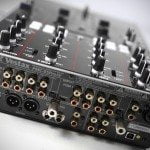

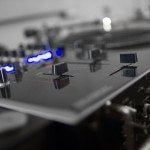
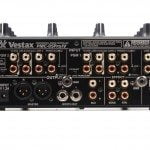

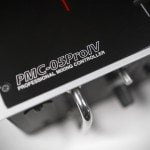
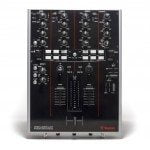

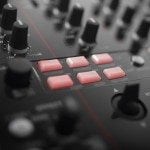
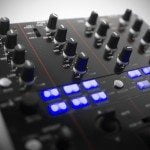
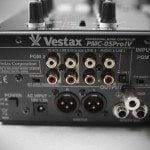
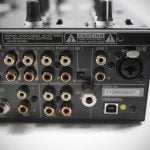

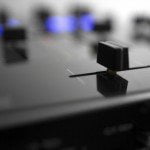

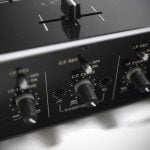
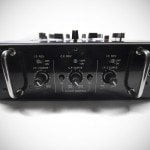


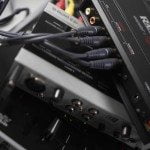

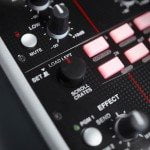
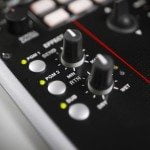

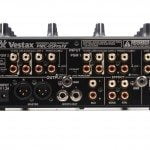
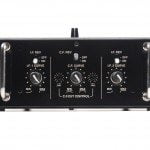
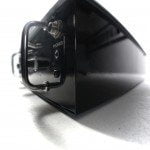
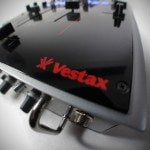

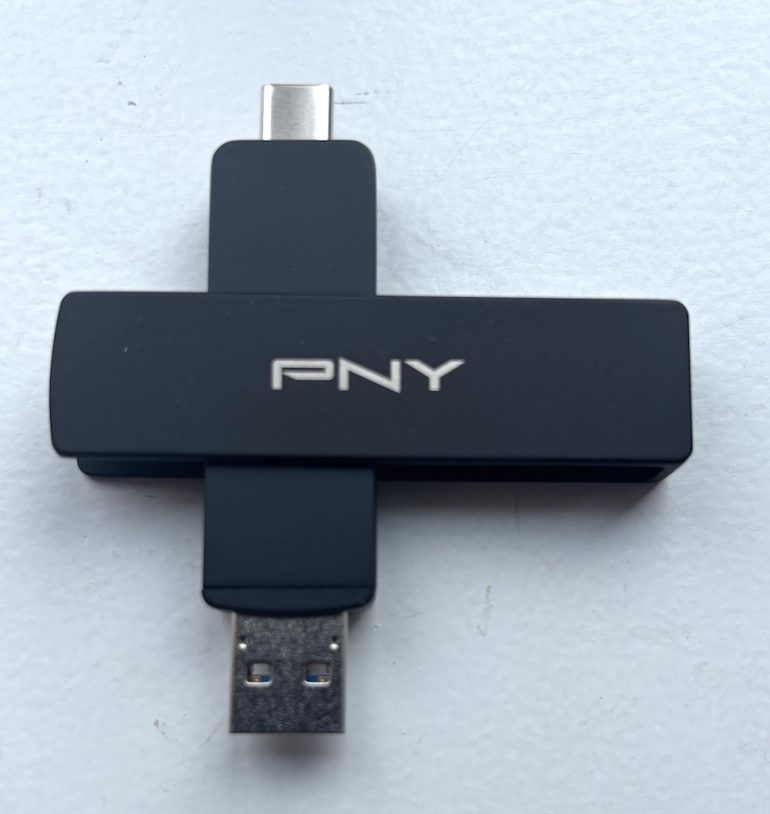


Love this mixer, big fan of the CF-X2. Had it in my VCi-300 and now my VCI-380. It’s really great to be able to use the same fader no matter using DVS/Vinyl or MIDI controller.
Good review… I’ve been waiting for this for a while now ;)
When I first saw this mixer at BPM 2010 I liked the cross fader but not much else. But about a year ago I was in the market for a new scratch mixer with a propriety xfade, plus a third input/channel and an FX loop that could be sent to all three… ideally something well built with all the usual scratch controls and ins/outs. I kept in coming back to one of these, and at the £550 there were selling for they were almost good value too.
All that put me off was the slew of moans on various forums about terrible build quality issues, particularly with early units. In the end I took a chance on one making sure to check everything from various forum rants as soon as I got it. My one is solid and has worked perfectly to date..
Since I’ve had it, I’ve noticed a lot of other scratch djs approach it with caution, be it for poor build rep, flashy lights or it’s lightweight fader… But most seem to be pleasantly surprised that it’s actually quite good, mine’s definitely won a few fans along the way.
Given time to get used to it, my favourite thing about it overall would have to be that CF-X2 fader. It does not have a particularly nice feel in the hand (like an innofader or my Rane), but once you get past the Lego block fader cap and the slightly loose, cheap feel, it cuts so sweet.
I also own or have regular access to; a P&G, an innofader, a Rane TTM, a Pro X Fade and a Pioneer 707 optical… But overall my favourite is definitely the CF-X2 (followed by the Rane, for the record).
Good review… I’ve been waiting for this for a while now ;)
When I first saw this mixer at BPM 2010 I liked the cross fader but not much else. But about a year ago I was in the market for a new scratch mixer with a propriety xfade, plus a third input/channel and an FX loop that could be sent to all three… ideally something well built with all the usual scratch controls and ins/outs. I kept in coming back to one of these, and at the £550 there were selling for they were almost good value too.
All that put me off was the slew of moans on various forums about terrible build quality issues, particularly with early units. In the end I took a chance on one making sure to check everything from various forum rants as soon as I got it. My one is solid and has worked perfectly to date..
Since I’ve had it, I’ve noticed a lot of other scratch djs approach it with caution, be it for poor build rep, flashy lights or it’s lightweight fader… But most seem to be pleasantly surprised that it’s actually quite good, mine’s definitely won a few fans along the way.
Given time to get used to it, my favourite thing about it overall would have to be that CF-X2 fader. It does not have a particularly nice feel in the hand (like an innofader or my Rane), but once you get past the Lego block fader cap and the slightly loose, cheap feel, it cuts so sweet.
I also own or have regular access to; a P&G, an innofader, a Rane TTM, a Pro X Fade and a Pioneer 707 optical… But overall my favourite is definitely the CF-X2 (followed by the Rane, for the record).
Great review. Definately got my interest. When I bought the 08, years ago, the main reason was all the cue options, like being able to hear the return track pre fader. I should have returned it while I had the chance, because you can only listen to all those awesome inputs post fade, which is useless. Does the new 05 solve this issue? Cheers!
Nice can I hope they add a sound card one day
Great Review – backs up my feelings about the mixer exactly.
The fader for me is massive selling point – its perfect for me (but i could see why it may not be everyone’s cup of tea it is so very light)
Not sure how to compare the sound quality myself – sounds crisper than my old Ecler Mixer imho.
I think they missed a trick not having any midi assignable pots & i havent worked to how to map the mute/toggle switches (with out still muting the audio) But the button bank is genius and well placed and the buttons are by no means mpc style but are solid and work well. Also there is not much chance of a miss hit or half press. having the scroll knobs for track selctions is great again not sure if there is an option to use these to control effects (i went for the simple option of track selection)
The build quaility is good – i was worried about the bit of wobble on the eq pots as on my mixer there is a clear gap between the edges around the pots and there seems to be some left to right play but very minimal.
Overal a great mixer and really useful dvs options midi faders for all you video kids and a fair sight cheaper than a new Rane.
My only issue with it now is that my vci380 has taken pride of place between my tts in my setup and i am so close to whipping the fader out my 05pro to put in the vci….
Do anyone know how to connect 2 dvs boxes on this mixer or how that works? Anyone have a video or tutorial. The video posted does not show how to actual get it done.
Firstly, the mixer supports the simultaneous connection of 2 DVS boxes – the first via the usual stereo phono and line input, the second via a switchable line/phono level output and second line input, as first seen on the earlier PMC-05 Mk III DX (see Johnny 1 Move’s review elsewhere in the skratchworx archive for a detailed video demonstration).
Can anyone tell me what the 2 screws and plate to the left of the contours for the line and crossfader is for? I am also worried about build quality for this mixer. has anyone heard or read anything negative? I purchased 2 used from Guitar Center (both of which went back to GC for a full refund). I like this mixer because 1) it has midi, 2) it is half the price of the Rane 62, 3) the cross-fader is really nice, 4) the headphone and volume cue are faders. This mixer reminds me of my Vestax 07 Pro.
I found out what the plate for is for. You can buy an external Vestax USB soundcard called the TUB-1 (google it on youtube). The TUB-1 allos you to record your mixes onto a computer and also you are able to play music from your computer directly into your mixer. Unfortunately, the TUB-1 is now supposedly discontinued.
I like the clean metal build a lot and the cross fader is just with my Denon x-1600.
But he’s now 700euro., in holland and I never felt one. Most here is pioneer,but it seems well build with enough in and outputs. The only question is, how does it sound……
Gr from holland
I want to mod my 05 MKIV midi led buttons so that they reflect the color of SSL cues (red, yellow and green).
Probably way easier to use a Reloop Neon.
I don’t want to buy/use more equipment. I would rather change out the led within the mixer. Soldering is not that hard to do. I want to make each button a different color to correspond with SSL cue points. Much like the new 57SL II.
I have pmc 05 pro 2 and power is faulty lights flicker on slightly then cuts off I’m thinking a new powe supply… Any suggestions anyone… Thanks
Same problem here – did a new power supply work ?
Funny enough I found another power supply from some other electric device I have and problem solved so I would say yes and you can get the power supply from eBay or maplin electronics